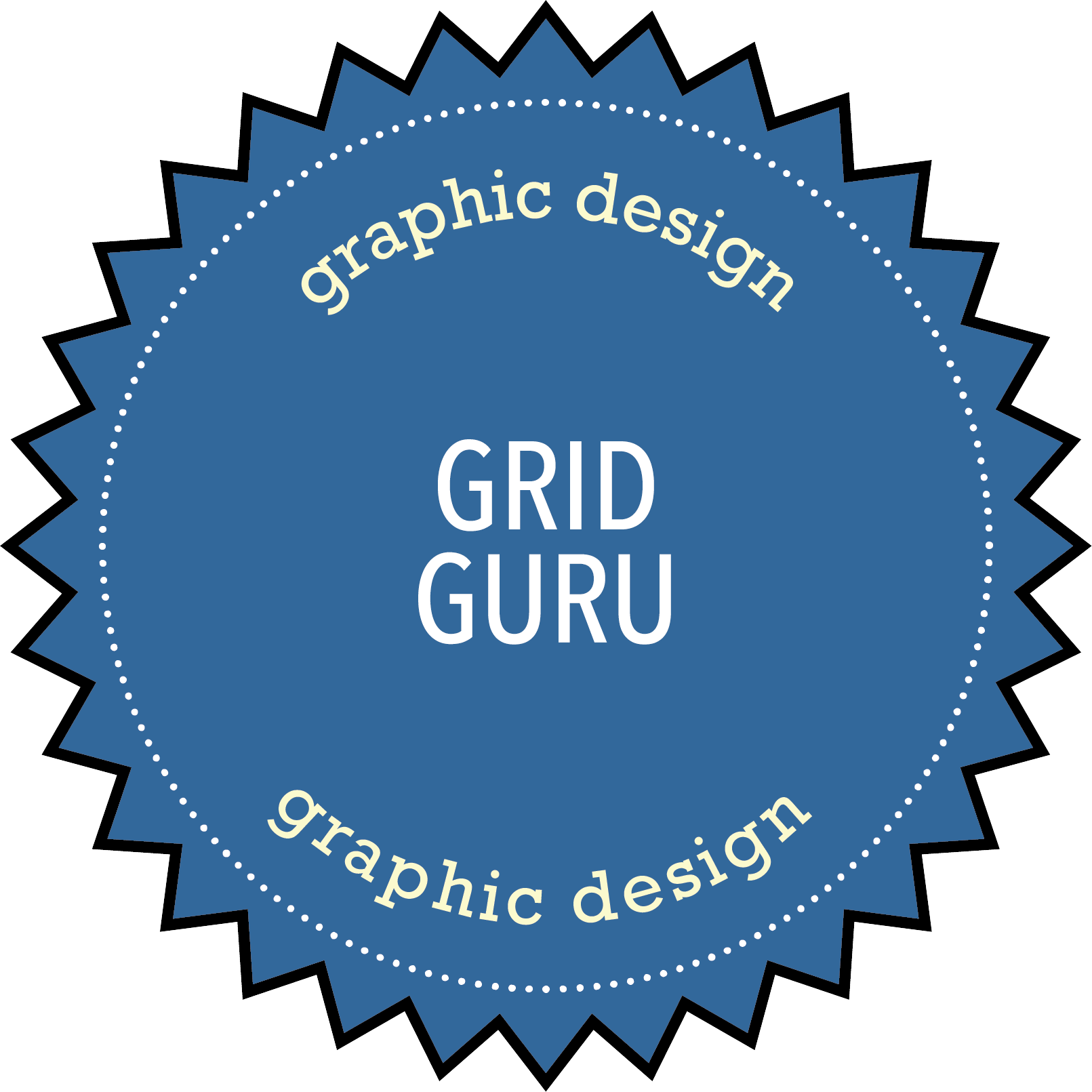
Graphic Design
Grid Guru
In the years following the second world war, graphic designers moved from more open-ended design practices to embrace grid-based design. Though reviled by some designers as sterile and oppressive, there is much to be said in favor of grid-based layout.
According to the graphic designer Lucienne Roberts, " A graphic-design grid is a bit like magic (now you see it, now you don't) sets of intersecting lines that help the designer decide where to put things, but that generally no one else sees. The benefits of using a grid are multifarious, ranging from the psychological to the functional, and, of course, the aesthetic. The grid embodies all the contradictions that designers struggle with. This is the designer's very own enigma code that can elevate design discourse to that of a science, and eradicate the creative block by "virtually" filling the blank page."
To earn this badge, you will use the principles of grid-based design to create two versions of the same poster. If you are fascinated by the world of design, you should pursue this badge.
BADGE DELIVERABLES
- To get started, review the articles linked in the "useful resources" section below. This includes the legendary Vinn and Boulton presentation titled "Grids are good (right?)," a designer's guide to grid theory published by Creative Bloq, Mary Strible's "15 reasons why a grid-based approach will improve your designs," and stellar explanations of grid design concepts by Troy Templeman and Andrew Maher. This might seem like a huge amount of reading, but the material is not particularly dense.
- Next, spend approximately one hour watching Sean Adams explain grid fundamentals in his Lynda tutorial "Foundations of Layout and Composition: Grids."
- If you are hungry for additional grid examples, you should visit TLEARN, and skim the excerpts from Josef Muller-Brockmann's book Grid Systems in Graphic Design: A Visual Communication Manual for Graphic Designers, Typographers, and Three Dimensional Designers and from Timothy Samara's book Making the Grid: A Graphic Design Workshop. The Muller-Brockmann and Samara readings are optional.
- Now that you have worked through several explanations of grid-based design, you will synthesize what you have learned by designing a poster that relies on an underlying grid. This might be a poster for a campus event, a poster advertising a favorite movie or band, or a more traditional propaganda poster. You can design the poster in Illustrator, InDesign, Photoshop, or Sketch.
- Begin by identifying the goals of this poster. What information must be communicated to the viewer? Create an information hierarchy. What is most important? What is of secondary or tertiary importance? What mood are you hoping to create with this poster? How will color and type reinforce this mood?
- Create an empty, non-printable grid in your design software, and take a screenshot of the grid. How many columns and rows are you using? How wide are the gutters? You should be using pixels as the base unit for this grid.
- Using this invisible grid as the basis for your design, create two different versions of the same poster. Each version of your poster should use the grid in a different way. You should take screenshots of the posters with the underlying grid visible, and you should also export the posters as JPG or PNG files without the underlying grid displayed.
- Your final deliverables include the two posters and a blog write-up which explains how you incorporated grid principles in the design. Your blog posting (at least 750 words) should include screenshots that show how the underlying grid works for each poster. All badge write-ups should be posted to your personal blog.
- Remember that your blog posting should be written in a professional tone, as if you were explaining grid systems to a colleague or client. Avoid first-person. When finished, send a message titled "Pending: Grid based design" to adelwich@trinity.edu and include a hyperlink to your blog posting.
USEFUL RESOURCES
- Khoi Vinn and Mark Boulton (2007) "Grids are good (right?)" Slide deck presented to SXSW Interactive, March 10.
- Creative Bloq Staff (2014) "Designer's guide to grid theory," Creative Bloq, April 15.
- Mary Stribley (2015) "15 reasons why a grid-based approach will improve your designs," Design School, November 8.
- Chris Brauckmuller (2010), "Grid-based web design simplified," Smashing Magazine, April 29.
- Troy Templeman (2010) "Grids in graphic design," Troy Templeman, April 30.
- Andrew Maher (2012) "How you make a grid," Singleton Art.